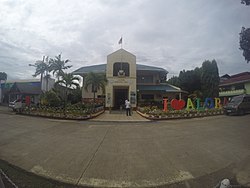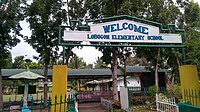
Simunul, officially the Municipality of Simunul, is a 4th class municipality in the province of Tawi-Tawi, Philippines. According to the 2020 census, it has a population of 34,245 people. The majority of the people living here are Muslims.

Baliangao, officially the Municipality of Baliangao, is a 5th class municipality in the province of Misamis Occidental, Philippines. According to the 2020 census, it has a population of 18,433 people.

Bonifacio, officially the Municipality of Bonifacio, is a 4th class municipality in the province of Misamis Occidental, Philippines. According to the 2020 census, it had a population of 34,558 people.

Clarin, officially the Municipality of Clarin, is a 4th class municipality in the province of Misamis Occidental, Philippines. According to the 2020 census, it has a population of 39,356 people. Source: "clarinmisocc.gov.ph"

Concepcion, officially the Municipality of Concepcion, is a 6th class municipality in the province of Misamis Occidental, Philippines. According to the 2020 census, it has a population of 9,324 people.

Jimenez, officially the Municipality of Jimenez, is a 3rd class municipality in the province of Misamis Occidental, Philippines. According to the 2020 census, it has a population of 28,909 people.

Lopez Jaena, officially the Municipality of Lopez Jaena, is a 4th class municipality in the province of Misamis Occidental, Philippines and a suburb of neighboring Oroquieta City. According to the 2020 census, it has a population of 25,507 people.

Oroquieta,(formerly/originally known as Layawan), officially the City of Oroquieta, is a 4th class component city and capital of the province of Misamis Occidental, Philippines. According to the 2020 census, it has a population of 72,301 people.

Panaon, officially the Municipality of Panaon, is a 5th class municipality in the province of Misamis Occidental, Philippines. According to the 2020 census, it has a population of 10,797 people.

Sapang Dalaga, officially the Municipality of Sapang Dalaga, is a 5th class municipality in the province of Misamis Occidental, Philippines. According to the 2020 census, it has a population of 20,490 people.

Sinacaban, officially the Municipality of Sinacaban, is a 5th class municipality in the province of Misamis Occidental, Philippines. According to the 2020 census, it has a population of 19,671 people.
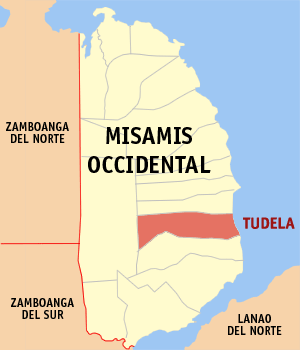
Tudela, officially the Municipality of Tudela,, is a 4th class municipality in the province of Misamis Occidental, Philippines. According to the 2020 census, it has a population of 28,599 people.
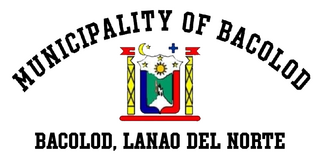
Bacolod, officially the Municipality of Bacolod, is a 4th class municipality in the province of Lanao del Norte, Philippines. According to the 2020 census, it has a population of 24,367 people. The town is home to an old Spanish fort, known as Fuerza de Bacolod, which is in dire need of proper conservation and faithful restoration by the National Museum of the Philippines.

Binuangan, officially the Municipality of Binuangan, is a 6th class municipality in the province of Misamis Oriental, Philippines. According to the 2020 census, it has a population of 7,441 people.

El Salvador, officially the City of El Salvador, is a 6th class component city in the province of Misamis Oriental, Philippines. According to the 2020 census, it has a population of 58,771 people.

Lugait, officially the Municipality of Lugait, is a 2nd class municipality in the province of Misamis Oriental, Philippines. According to the 2020 census, it has a population of 20,559 people.

Manticao, officially the Municipality of Manticao, is a 4th class municipality in the province of Misamis Oriental, Philippines. According to the 2020 census, it has a population of 29,469 people.

Salay, officially the Municipality of Salay, is a 4th class municipality in the province of Misamis Oriental, Philippines. According to the 2020 census, it has a population of 29,998 people. The town is known for its handmade paper and papercrafts, similar to washi, but made with indigenous fibers.

Sugbongcogon, officially the Municipality of Sugbongcogon, is a 5th class municipality in the province of Misamis Oriental, Philippines. According to the 2020 census, it has a population of 9,764 people. Sugbongcogon became an independent municipality on June 22, 1963.
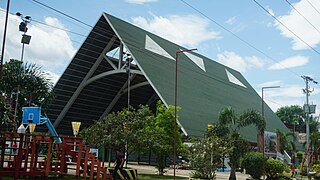
Villanueva, officially the Municipality of Villanueva, is a 2nd class municipality in the province of Misamis Oriental, Philippines. According to the 2020 census, it has a population of 40,419 people.
